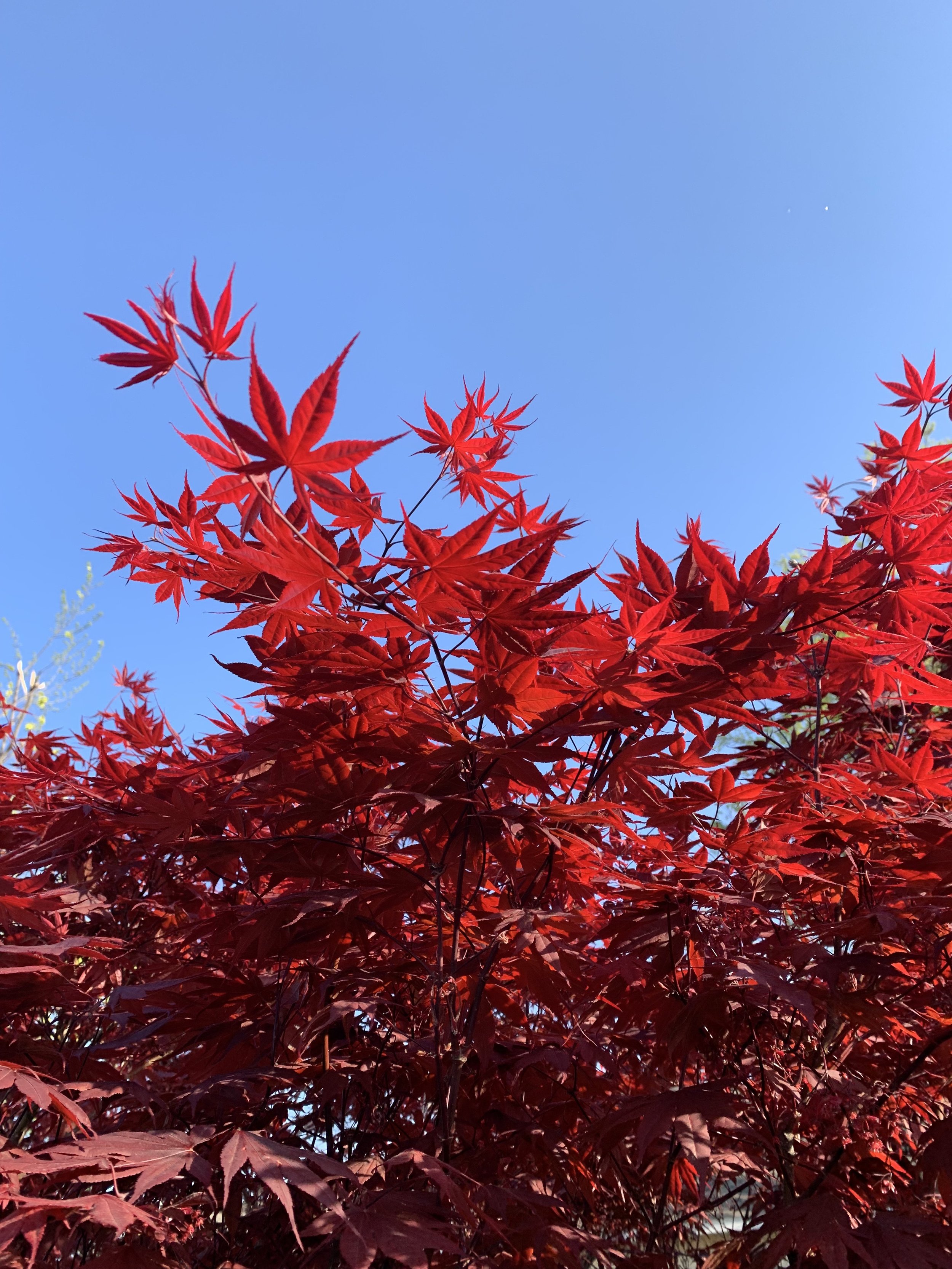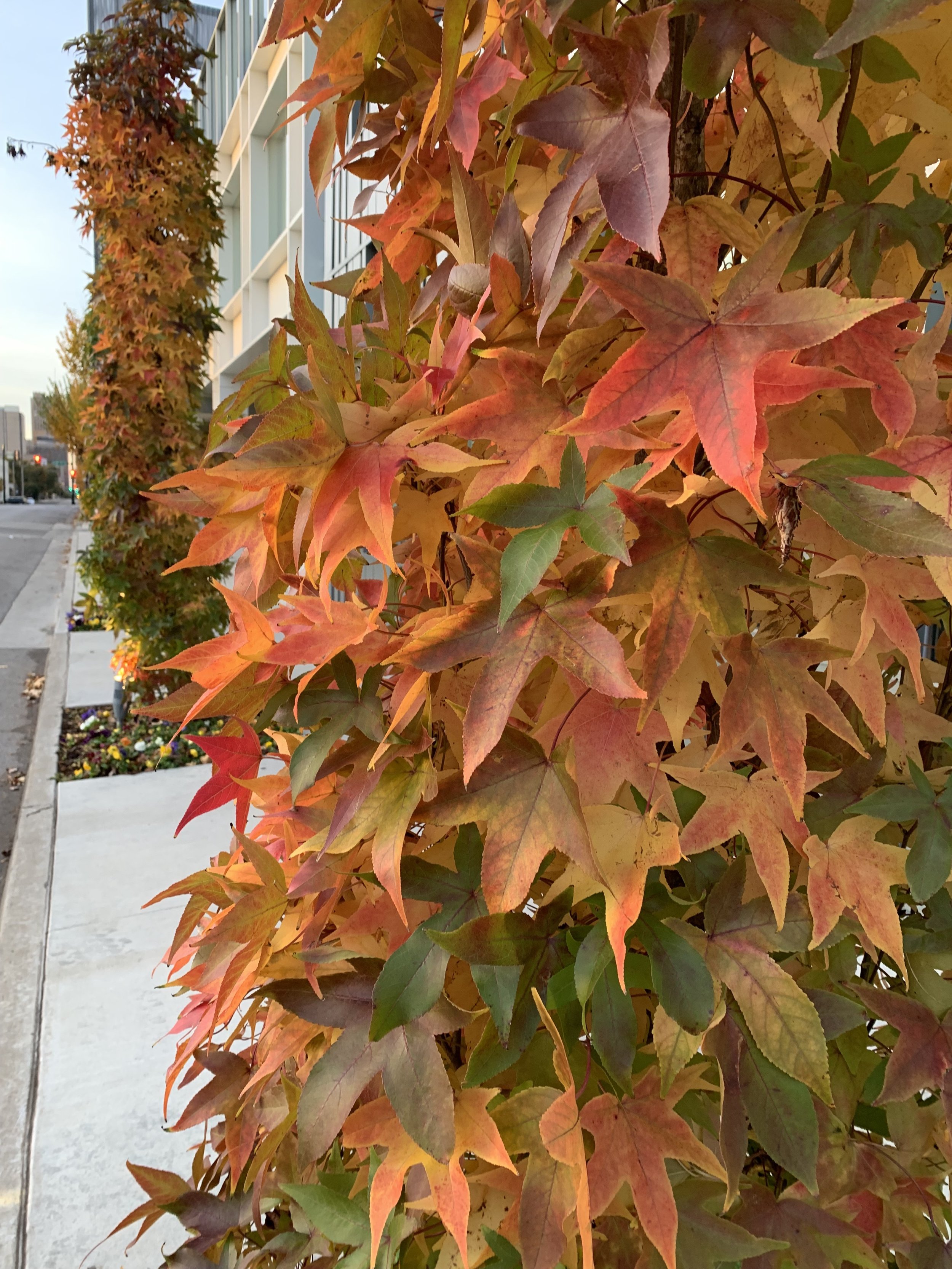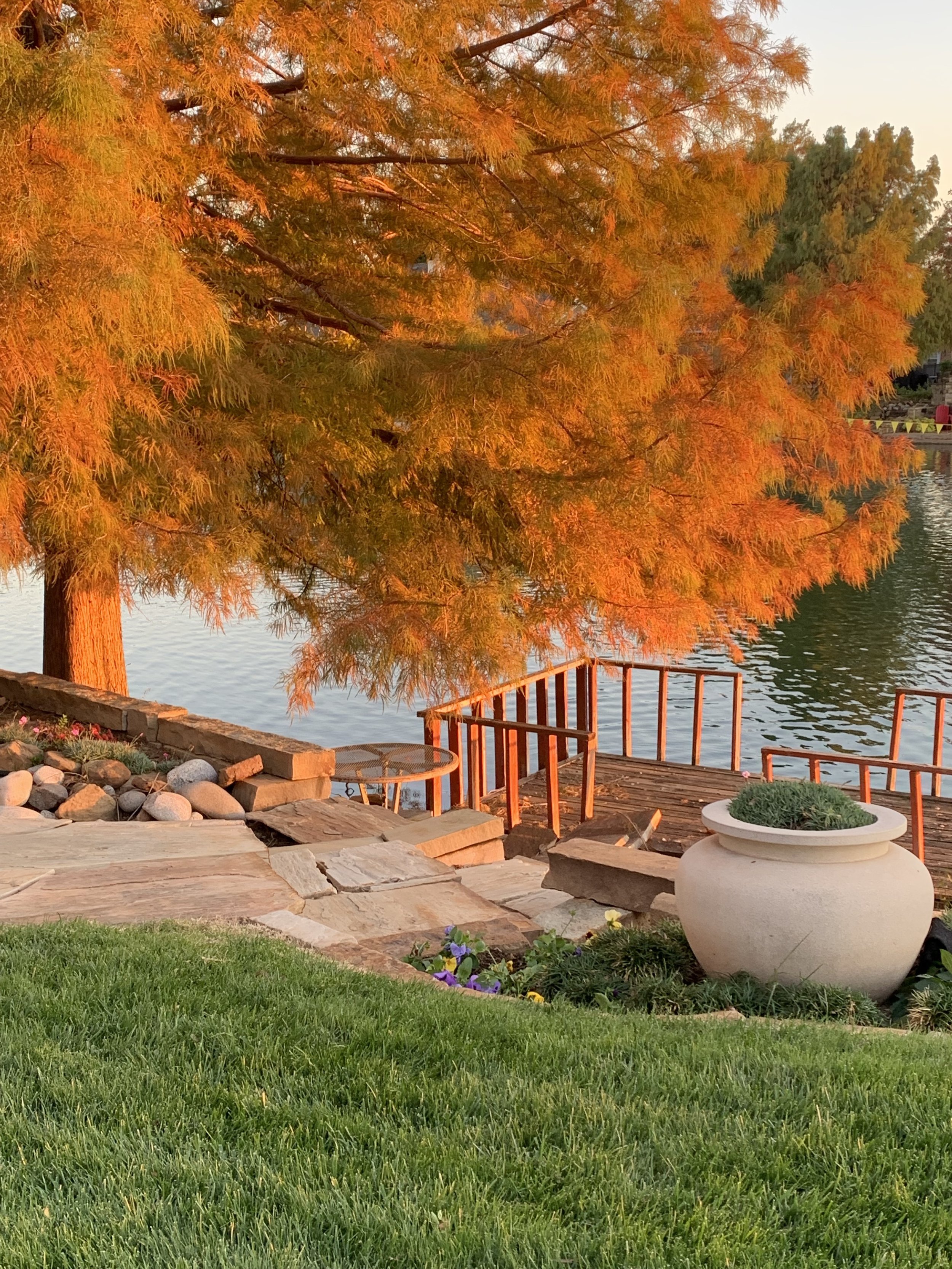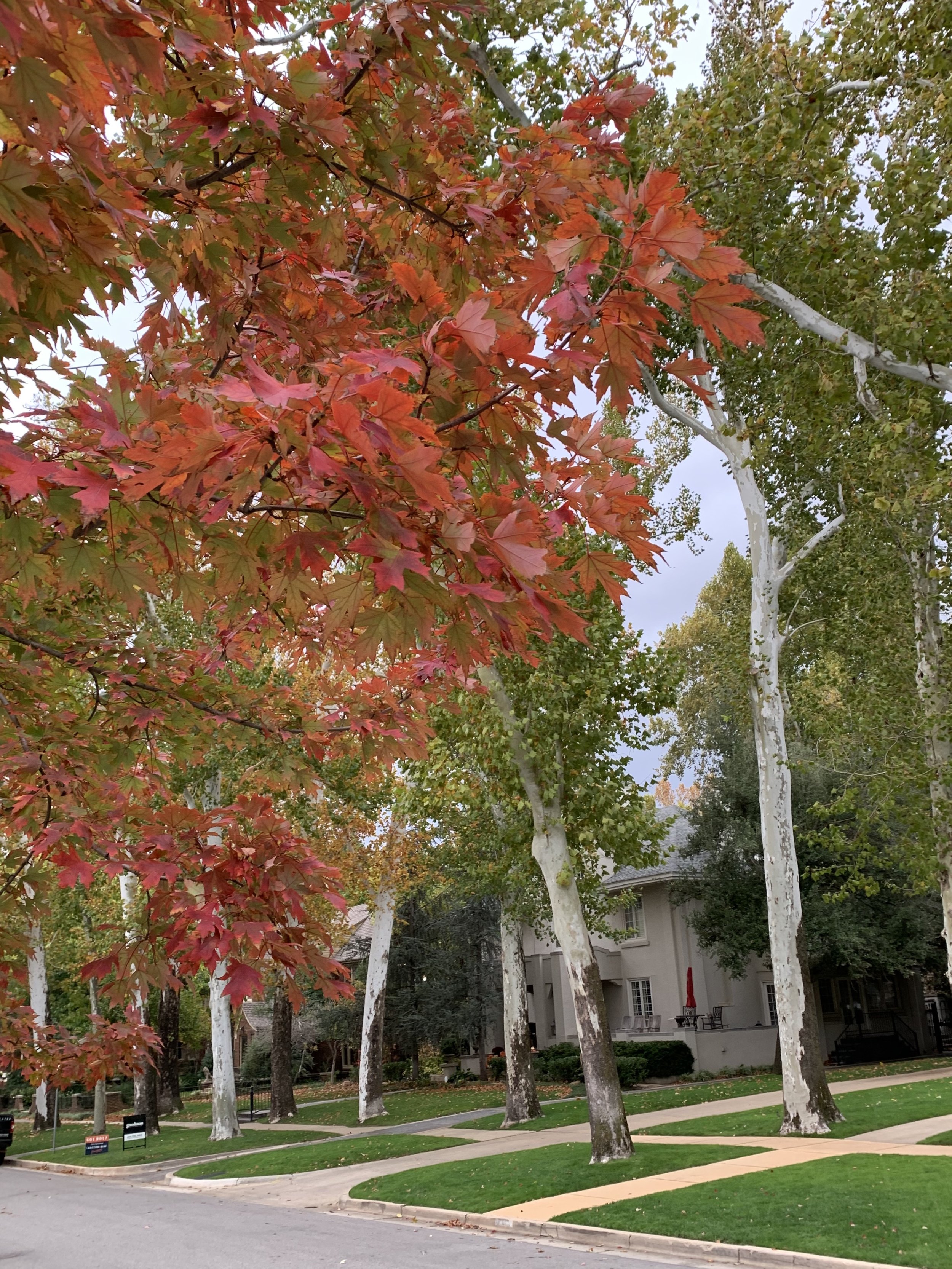Trees -- the pillars of our landscapes!
“Trees are the truly the pillars of our landscapes…
Think of trees as an investment for future generations…”
These are the words of Steve Dobbs as he introduces you to trees in his book Oklahoma Gardener’s Guide.
I am thankful previous generations took “investment in future generations to heart” and planted trees in the Oklahoma City area.
Trees are worth it.
Trees make a difference in the appearance of our communities.
There is not a better way to improve the appearance of an area than to plant a tree.
Trees make a difference in the way we feel.
Trees increase the value of a property.
Trees, trees... trees just make the world a better place!
You can count on Autumn Blaze Maples to be one of the first trees to add dynamic fall color to the landscape.
Every tree has its strength and weaknesses. Sweetgum gives us unique fall colors with a mix of yellow, purples and reds. But, it is also know for its large and obnoxious seed balls that litter the lawn.
Chinese Pistache is a medium sized tree with an oval top that is the perfect size for a city sized lot.
Too often we think of trees for their spring flowers or fall color, but when planning for your next tree don’t over look summer flowering trees such as the Golden Raintree.
So, if trees are worth it, what characteristics make for the best tree?
There is not a perfect tree for every location. But there is a perfect tree for each location.
Here are a few things to consider when selecting a tree:
First – the intended purpose is important.
Are you looking for shade, fall color, spring or summer flowers, screening, attracting wildlife, windbreak, etc.?
Second – the size of the area.
Large trees that grow over 35’ or taller are better suited for larger lawns and taller structures. Large trees planted on traditional-sized residential lots often result in the need for heavier pruning.
Silhouette Sweetgum couldn’t help but burst with color this week.
Trees remove carbon dioxide from the atmosphere and release oxygen providing for a cleaner, healthier climate. Per year a mature tree can consume 22 lbs of carbon dioxide and release enough oxygen for one person to breathe for 2 years.
Third – the shape of the tree.
Larger trees typically have a strong central leader and spreading branches that create a lot of shade. Trees with oval tops are often small to medium-sized. There are also columnar-shaped trees perfect for smaller areas.
Finally – consider the advantages and disadvantages of a particular tree.
Are they susceptible to disease or insects? Do they prefer wet or dry soils? It is important you select a tree that is suitable to your type of soil – sand, loam, or clay. Do they have seeds, fruit, or nuts that are obnoxious? Do they have soft or brittle wood that is easily damaged by wind or ice? Fast-growing trees typically have weak wood, and some trees have narrow branching angles that are susceptible to storm damage.
Japanese Maples with their bright spring colors are a great tree for small areas.
Where do you go to find the best trees for your landscape?
Let me give you three sources of information:
Oklahoma State University Fact Sheet HLA-6456 Selecting Deciduous Trees for Oklahoma
http://pods.dasnr.okstate.edu/docushare/dsweb/Get/Document-11113/HLA_6456web.pdf
The article breaks trees down into varieties that tolerate or prefer dry locations, tolerate or prefer wet locations, tolerate or prefer shade, tolerate or prefer alkaline soils, winter interest, showy bark of unusual form, interesting or showy fruit, showy flowers, fall color, planting under power lines, attract wildlife, native species, and undesirable trees. There is also a table of trees listing the region of the state, growth rate, height, and comments.
Some varieties of Japanese Maples have yellow fall color.
Consider the Silhouette Sweetgum for areas where you want great fall color in a tight space.
Autumn Blaze Maple
Crape Myrtles in our area are too often grown as large shrubs, but they actually are great small trees when they are not pruned to 5-6’ every year. Grown as a tree they are the longest blooming tree, have great fall color and their unique bark adds winter interest.
Oklahoma Proven!
http://www.oklahomaproven.org/welcome
A program by the Department of Horticulture and Landscape Architecture at Oklahoma State University. The program evaluates and recommends plants well-adapted for use across Oklahoma. Since 1999 the program has recommended trees, shrubs, perennials, and annuals.
Oklahoma Gardener’s Guide by Steve Dobbs
https://www.amazon.com/Oklahoma-Gardeners-Guide-Guides/dp/1591861241
A must-have book for anyone interested in Oklahoma landscapes. Steve’s book has been a great resource for me for years.
Something I learned from the Oklahoma Gardener’s Guide: Oklahoma is the only state in the nation that has four ecoregions. The ecoregions of the desert southwest, great plains, continental east, and humid south meet in Oklahoma City! (Facts like this usually earn me the most boring person at a party.)
Bald Cypress is a deciduous needle tree grows well in wet, clay soils. It is a large tree that really needs more space than most lawns provide.
When is the best time to plant trees?
The best time to plant a tree can vary with the type of plant and the growing method. The two most common growing methods are balled and burlap (B&B) and container grown. A B&B tree is grown in the ground, dug and the root ball is wrapped in burlap. A container tree is grown from a sapling in a container often using a lightweight growing mixture of mulch and soil amendments. Both are acceptable, but B&B is the most common method.
As a general rule of thumb, the best time to plant a B&B tree is during winter dormancy. B&B trees are harvested after the first hard freeze and before leaves bud out in the spring, while they are dormant. When they are dug and replanted while dormant the tree will go through less transplant shock.
The best time to plant a container-grown tree is during the fall when daytime temperatures are cool, but soil temperatures are still warm.
These are the best times to plant trees, but most trees can be planted year-round in Oklahoma. Just keep in mind that trees planted during the summer growing season will need extra care until they are well established.
The best answer to the question: “When is the best time to plant a tree?” is answered by a Chinese Proverb:
The best time to plant a tree was 20 years ago.
The second-best time is now.
Lorne Hall
Hall | Stewart Lawn + Landscape
(405)367-3873
Saucer Magnolia is a deciduous, small tree that brightens the early spring flowers landscape with large flowers.
Very thankful for the vision of previous generations who planted an allee of London Planetrees in early Oklahoma City neighborhoods.
The Oklahoma State tree, Redbud, is a small tree perfect for many residential lawns.
USDA Forest Service reports healthy, mature trees in a well-landscaped yard add an average of 10% to a property’s value.




















